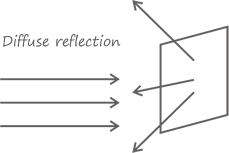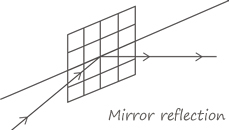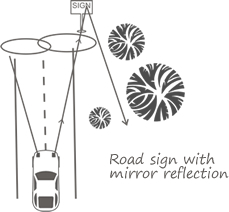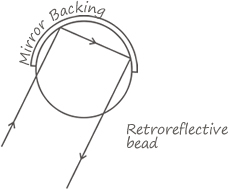What is Retro-reflectivity?
Information sources:本站 | Release date:
2020-04-17
| Browse volume:1513
Summary:In road sign industry , one of the major arenas in which progress has been made is reflection. Road signs today are far more reflective than their lackluster predecessors. Thanks to recent improvements, high-quality signs glow at the sides of roads li…
In road sign industry , one of the major arenas in which progress has been made is reflection. Road signs today are far more reflective than their lackluster predecessors. Thanks to recent improvements, high-quality signs glow at the sides of roads like proverbial North Stars, and as a result, it is much safer to drive at night than it was in the past.
Making road signs reflective is not as straightforward as it might seem. One of the main challenges is to make sure that light is reflected back towards its source. That may sound easy, but it is not. Let us explain.
Light reflects off different materials and surfaces in different ways. In general, there are three kinds of reflection: diffuse reflection, mirror reflection, and retro-reflection. Road signs are only useful at night if they are retroreflective.

Diffuse reflection occurs when light strikes a rough or granular surface, such as cloth or paper, and scatters in different directions, causing a concentrated beam of light to become diffuse or spread out. A good example of diffuse reflection is the reflection that occurs when light strikes a mat surface. The light beams hit the mat surface and bounce off it in different directions, creating a soft, unfocused reflection.

Mirror reflection occurs when light strikes a surface that is smooth or glossy, such as a mirror. Light reflects off such surfaces at equal but opposite angles, and the reflected beam of light remains focused and concentrated, creating a ‘sharp’ reflection.
Here’s where we come to our first hurdle. If road signs reflected light the way mirrors reflect light, you would not be able to see them at night. When you drive past a road sign at night, the sign is usually located to the right or the left of the road.

In both situations, the light from your headlights strikes the sign at an angle. If road signs were made from regular reflective materials, the light from your headlights would bounce off them at equal but opposite angles and end up illuminating the trees beside the road. Very little or no light would reach your eyes, and you would not be able to read the sign. But road signs don't reflect light the way mirrors do. They reflect light retro-reflectively.

Retroreflection is the same as mirror reflection with one major difference; light beams that strike a retroreflective surface bounce back in the same direction as they came. For the most part, retroflection is achieved in two different ways. Three mirrors arranged perpendicularly into a ‘cubes corner’ will return light directly to its source, as will a transparent sphere backed by a spherical mirror.



